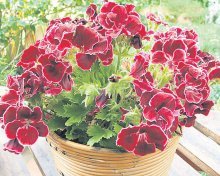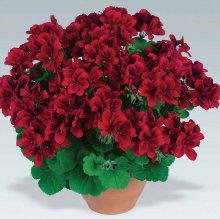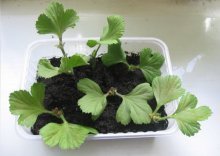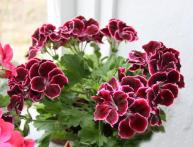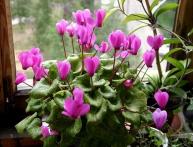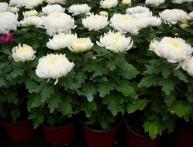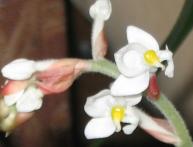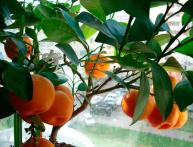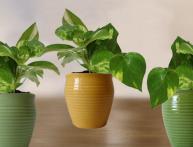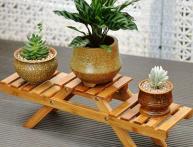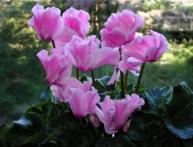Pelargonium grandiflora - exquisite beauty on the windowsill
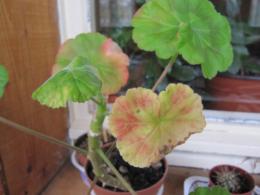
Geranium is one of the most common indoor plants in our country. Pelargonium grandiflora also belongs to the geranium family, which is also often called royal and royal for its large luxurious flowers.
Content:
- Botanical features of Pelargonium grandiflora
- Maintenance and care
- Reproduction and transplantation
- Diseases
Botanical features of Pelargonium grandiflora

From ordinary geranium pelargonium Grandiflora differs in the structure of the flower, its upper three petals are very large, and the lower pair are smaller, and the petals overlap each other. The flowers of this plant are collected in thick, showy umbrellas. Geranium flowers have five identical petals, and the inflorescences form corymbs. In addition, pelargonium flowers are simply huge compared to geranium flowers; there are varieties with double inflorescences of various colors, from snow-white and light pink to burgundy and purple. The petals may be corrugated or wavy, with a dark spot or stripe along the veins. At proper care and content, flowers can reach a diameter of up to 15 cm.
The shoots of pelargonium grandiflora, like other types of geranium, reach a height of up to half a meter, and the light green leaves along the edges are jagged, large and rough to the touch. This plant does not have the characteristic smell of geranium. Unfortunately, royal pelargonium is distinguished not only by its beauty, but also by its capriciousness.Making it bloom is not so easy, and the flowering, unlike geranium, will not last too long, only a few months, nothing can be done about it.
Maintenance and care

The royal plant requires good lighting, but needs protection from direct sun. It is best to keep it under artificial lighting, but it is also possible on a window, with the exception of one facing the north. If pelargonium does not have enough light, it may not bloom or its flowers will be small. When kept on a window in the hot season, it needs shading, otherwise burns may appear on the leaves. In summer, it is better not to take the plant out into the open air; it is afraid of rain and winds. In summer, the ideal place to keep it is a glazed veranda or loggia. In winter, pelargonium needs a cool temperature of around +15 degrees, otherwise all its energy will be spent on surviving in hot conditions, and there will be no left for flowering. In addition, if temperature conditions are not observed, plants are often attacked by pests, for example, whiteflies and aphids.
Pelargonium grandiflora loves abundant watering, but does not tolerate waterlogging, so it needs good drainage. It is better to take soft, settled water for irrigation, and moisten the substrate only after its top layer has dried. When the soil becomes too wet or dry, the beauty instantly loses its color. You can spray the plant only when it is not blooming; water stains appear on the flowers. For abundant flowering and the formation of new shoots, pelargonium is regularly pinched. In the spring and summer, it needs to be fed with mineral fertilizer with a high potassium content, and during the flowering period - with any fertilizer for flowering indoor plants.To maintain an aesthetic appearance during the flowering period, faded flowers should be plucked off.
Reproduction and transplantation

Pelargonium grandiflora is quite easily propagated by vegetative methods. To do this, in spring or summer, cut off the tops of the shoots with several internodes, sprinkle the cut area with activated carbon and lightly dry it for a couple of hours. For rooting, you need to make a substrate from a mixture of peat and sand. In water, shoots very rarely take root; more often they simply begin to rot. It is better to cover the cuttings planted in peat and sand with a plastic bag to create a greenhouse effect. The substrate should be kept moist. After three weeks, the roots will appear, then the cutting can be transplanted to a permanent place in a mixture of leaf and turf soil with the addition of sand.
Pelargonium grandiflora can respond to replanting by reducing flowering, so it is replanted no more often than once every two or even three years, in the spring. The pot is selected so that the roots are slightly cramped; the plant does not like spacious containers. When transplanting, remove weak and elongated shoots.
Diseases

Unfortunately, pelargonium grandiflora is susceptible to numerous diseases, most often due to improper maintenance. So, with excess moisture and unsterilized soil, the plant may develop blackleg or late blight. There is also gray rot of pelargonium, which is unique to these plants and is not transmitted to other types of green pets. When the first signs of diseases appear, such as spots and deformations on the stems and leaves, you need to treat the plant with a systemic fungicide.


